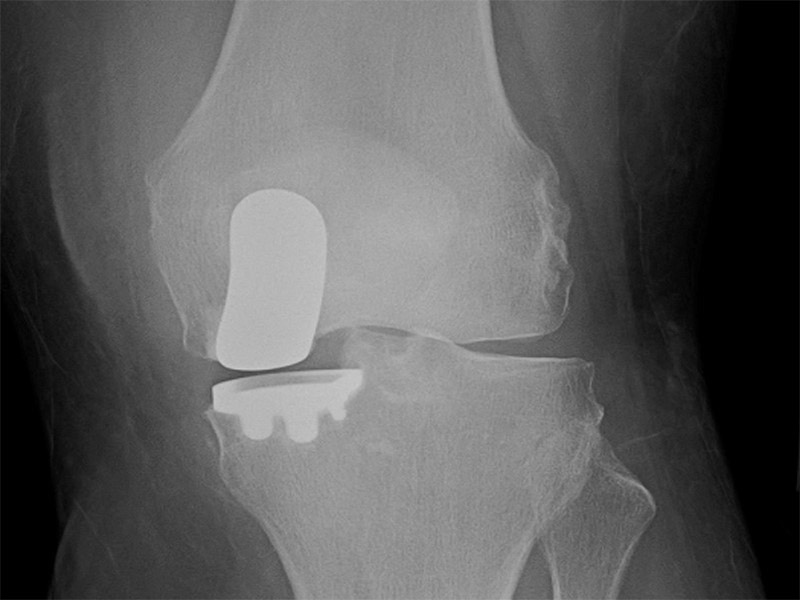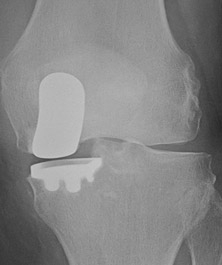
Your knee is divided into three different compartments: the medial compartment (the inside part of the knee), the lateral compartment (the outside part of the knee) and the patellofemoral compartment (the front of the knee, between the kneecap and thighbone). In the past, when one compartment failed, the response from many orthopedic surgeons was to replace all compartments through full knee replacement surgery. While full knee replacement is effective in many cases, advances in orthopedics have made way for less invasive, personalized techniques that treat only the damaged compartments while preserving the healthy tissue. There are a number of exciting alternatives to full replacement knee surgery.
Partial Knee Replacement
Partial knee replacement, also known as unicompartmental knee replacement, focuses on repairing only one compartment of the knee, instead of all three. It is like a miniature knee replacement with a plastic and metal implant that is used to replace the damaged or weakened compartment of the knee.
Partial knee replacement offers several benefits over full replacement. First, it allows you to preserve parts of your knee that are healthy and fully functioning. The surgery is performed through a smaller incision, which results in less pain and risk of complications. As a result, recovery is shorter and you will be able to return to normal activities sooner.
There are several types of partial knee replacement. Among the most exciting advances in partial replacement is robotically-assisted knee replacement. This minimally invasive approach uses a special X-ray system called a computed tomography (CT) scan to build a virtual model of your exact knee. We then use that exact model as a guide in the surgery. We register your bone to the “virtual” bone and then use a robotic arm to operate on the knee with precise and accurate movements, removing just the bone needed to place a perfectly positioned implant. Real-time video images provide visual reinforcement to help us navigate hard-to-see areas, allowing the incision to be even smaller. This technology allows us to plan and execute surgery in a more accurate and personalized manner. You can think of it as the ultimate GPS system for the knee. This procedure allows many patients to go home the same day of surgery with minimal discomfort.
Biological Joint Replacement: A New Frontier
Biological joint replacement is a relatively new alternative to knee replacement with an artificial implant. This procedure is usually done as an organ transplant of a part of the joint surface. It is most commonly performed in very young patients who have severe injuries or early arthritis. I have been very involved in this type of surgery since my training at UC San Diego, the original site for this type of surgery in the United States. Aside from writing papers on the topic as it pertains to treating ankle arthritis and knee arthritis, I have been working on the development of new techniques that make it possible to perform the procedure in a more precise manner. This has culminated in the first ever instrumentation recently developed at our center that will allow surgeons to perform a partial joint replacement of the medial, lateral or patellofemoral parts of the knee with all biological tissue. In spite of these exciting developments, biological joint replacement isn’t right for everyone. Older patients (age 50 and older) with severe arthritis may still be better off with a standard artificial knee implant.
To summarize, total knee replacement is an incredible procedure for many patients with advanced arthritis. It should be reserved for individuals with advanced arthritis in two or three compartments of the knee, and patients age 60 and older. Milder arthritis cases may be effectively treated with the less-invasive techniques described above.
To discuss your treatment options, please schedule a consultation with us today.








 Exploring Customized Treatment for Knee Replacement
Exploring Customized Treatment for Knee Replacement 







